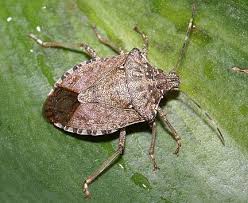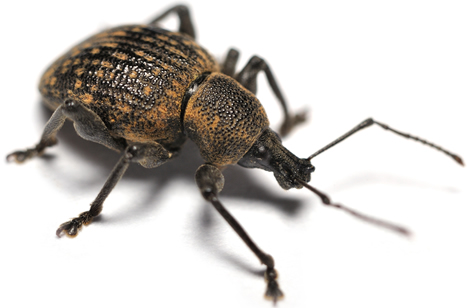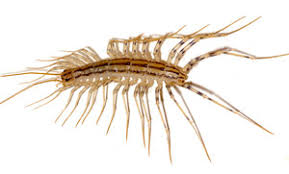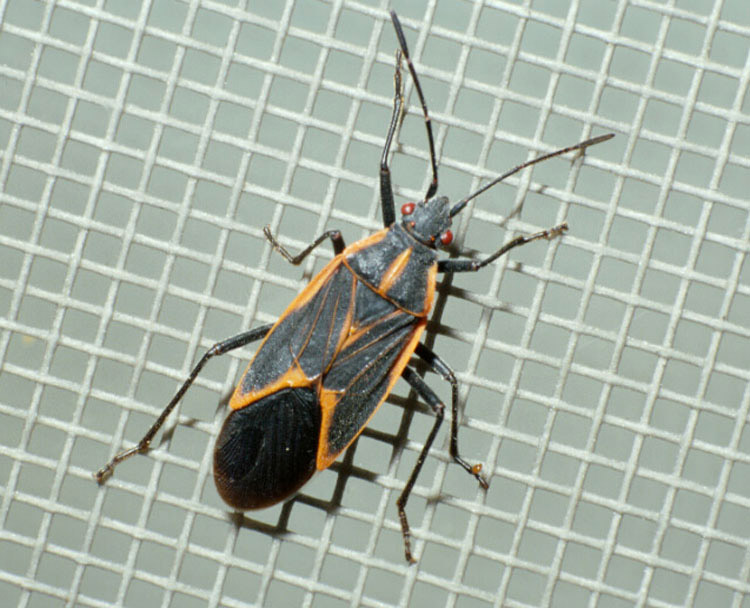Occassional Invaders Pest Guide
Stink Bugs

The stink bug got its name from its ability to release an awful odor when crushed or just disturbed.
If you don’t recognize these bugs and you accidentally step on them, you will quickly learn why these type of bugs are known as “stink bugs”. Due to the unpleasant first experience on these types of bug, we usually use the vacuum cleaner to get rid of them.
When they are molested or attacked by predators, they produce this liquid defensively in order to put off potential threat to their lives. Usually, they are not considered to be pests for they do not render significant loss to plants
Weevil

Weevils are ugly, snout-nosed bugs you can find in your rice, flour, or cornmeal. They are actually beetles from the Curculionidae family. Scientists estimate that there are approximately 1,000 species of Curculionidae in northern part of America.
These kind of bugs do not actually harm pets, home furnishings, or even people. However, they do damage seeds and grains and if in large groups, they can destroy food.
Lady Bug

Most ladybugs voraciously consume plant-eating insects, such as aphids, and in doing so they help to protect crops.These much loved critters are also known as lady beetles or ladybird beetles.
Ladybugs, or lady beetles, are considered a beneficial bug which helps rid an area of crop-damaging aphids, mealybugs and other destructive insect pests. They come in many different colors and patterns, but the most familiar in North America is the seven-spotted ladybug, with its shiny, red-and-black body.
Millipedes

People find millipedes under mulch, piles of dead leaves, or under piles of grass clipping. Millipedes also live under structures like dog houses and storage sheds. Millipedes are not poisonous, but many species have glands capable of producing irritating fluids that may cause allergic reactions in some individuals.
Millipedes are docile decomposers that live in the leaf litter of forests all over the world. They make excellent pets. Centipedes have one pair of legs per body segment, while millipedes have two pairs.
Pill Bugs

Pillbugs have oval bodies and seven pairs of legs. This pest is the only crustacean that has become completely adapted to spending its life on land. Pillbugs have oval bodies and seven pairs of legs. They are easily recognized by their back, which is made up of seven hard individual plates. Pillbugs are sometimes referred to as rollie-pollies.
Pill bugs mostly eat rotting vegetation like vegetables. Pill bugs live in wet locations. They are found under damp objects or in organic garbage. If pill bugs enter a building, they will often dry out and die.
Centipedes

Centipedes are sometimes called “hundred-leggers” because of their many pairs of legs, but they can actually have anywhere from 15-177 pairs of legs, depending on the species. Interestingly, centipedes always have an odd number of pairs of legs.
Centipedes and millipedes also vary in diet: centipedes are carnivores and millipedes are primarily detritivores. Centipedes are carnivorous and kill their prey by injecting them with venom. Millipedes feed primarily on decaying organic matter and they may eat the roots and leaves of seedling plants.
Flour Beetle

These beetles have chewing mouthparts, but do not bite or sting. The red flour beetle may elicit an allergic response (Alanko et al. 2000), but is not known to spread disease and does not feed on or damage the structure of a home or furniture.
In addition to milled grain products, beetle specimens have been found in barley, breakfast cereals, corn, cornmeal, crackers, flour, millet, oats, rice, rye, wheat and wheat bran, nutmeats, dried fruits, legume seeds, beans, milk chocolate, cottonseed, peas, powdered milk, sunflower seeds, vetch seeds, spices, herbarium and museum specimens, and even baits poisoned with arsenic’s.
Earwigs

What is an Earwig?
There are more than twenty species of earwigs in the United States. Some species produce a foul smelling liquid that they use for defense. Earwigs also produce a pheromone (scent). Many people wonder if earwigs will bite people. The pincers are used for defense and if picked up and agitated, the earwig will exercise the use of the forceps.
However, like so many things on this planet – earwigs do have a purpose, whether it’s obvious or not! Earwigs are omnivores, regarded in the insect community as ‘sanitary engineers.’
Boxelder Bug

Boxelder bugs get their common name from the fact that they are often found on and around boxelder trees. Are box elder bugs poisonous? Generally, no. Boxelder bugs are mostly a nuisance pest. These bugs can bite.
Box elder bugs do not nest indoors year-round. They make their homes in box elder, maple and ash trees during warmer seasons and migrate into buildings and homes to find shelter for the winter.
